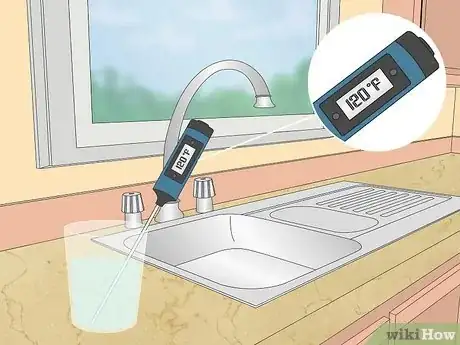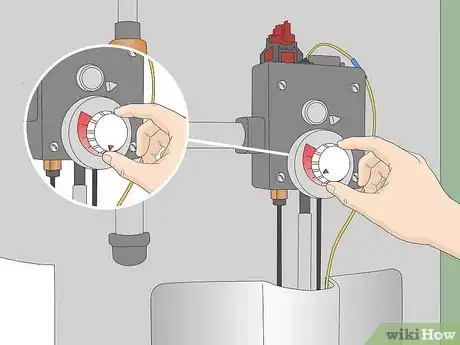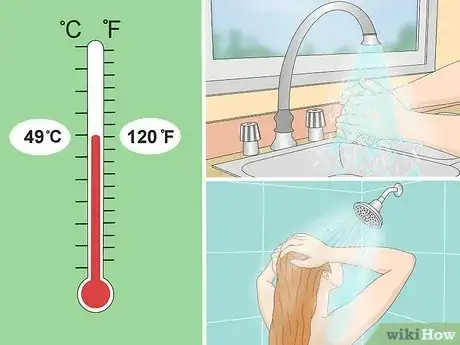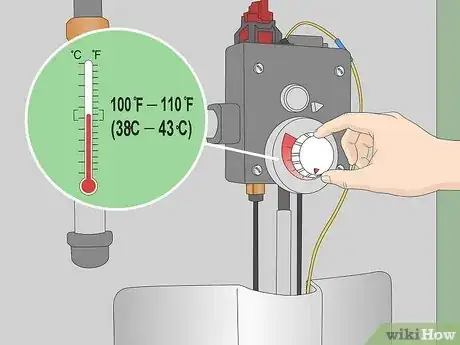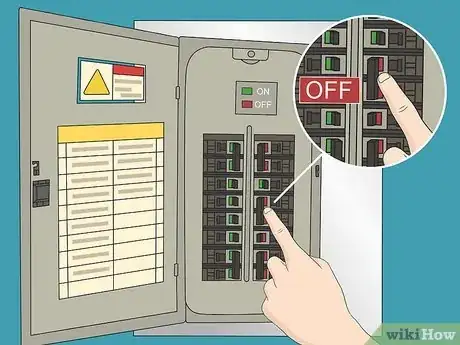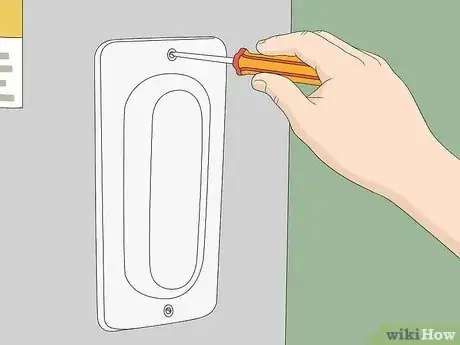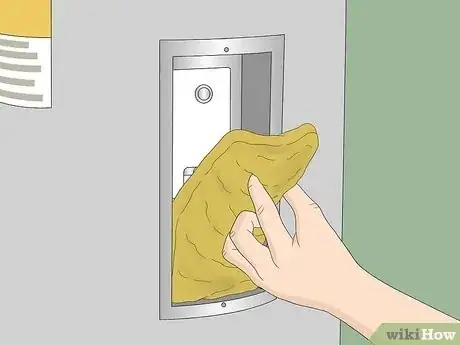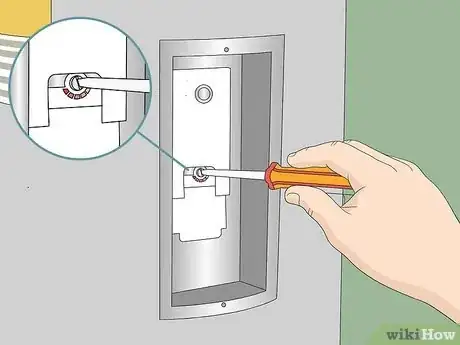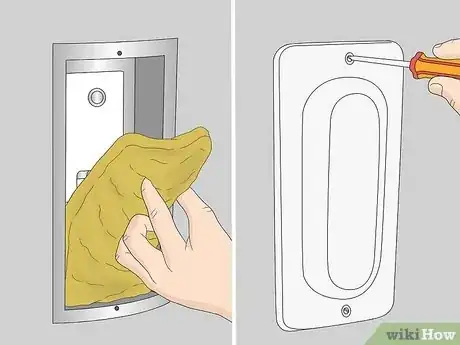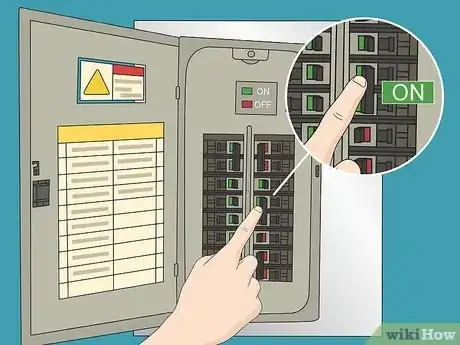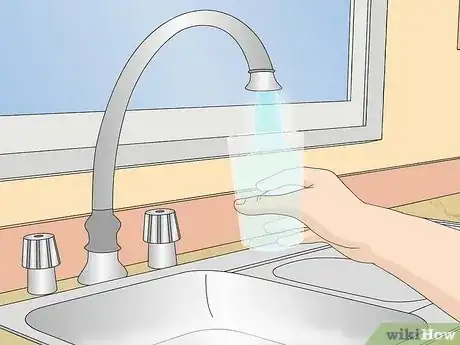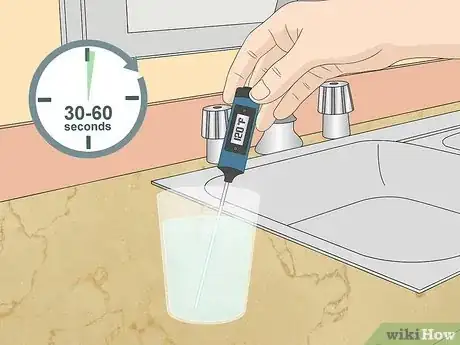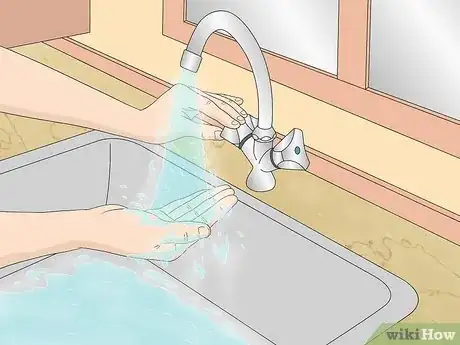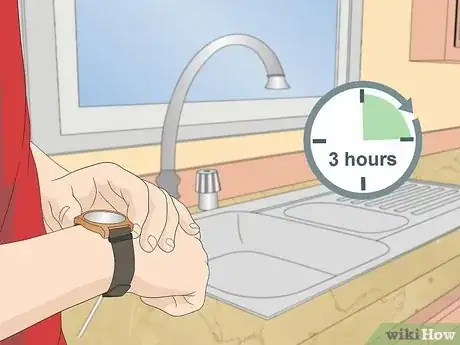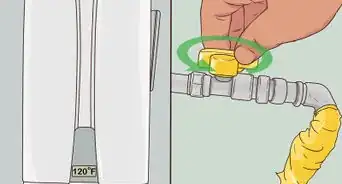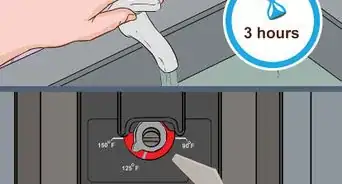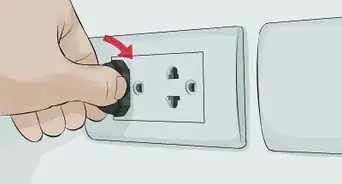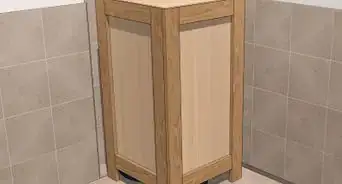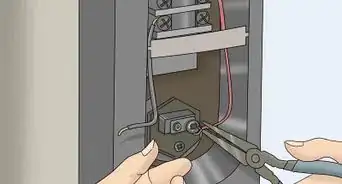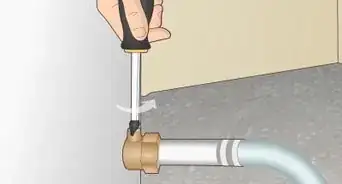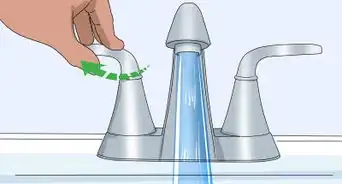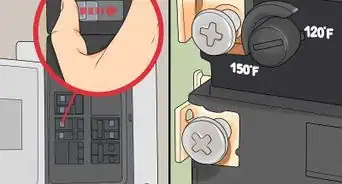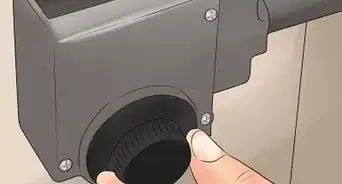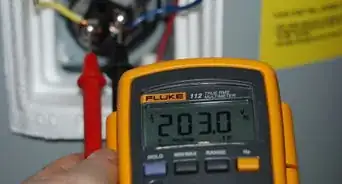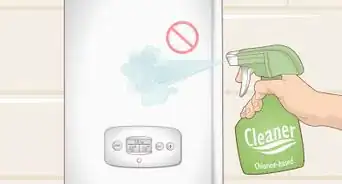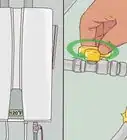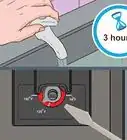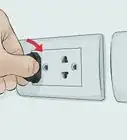This article was co-authored by Dave Jones. Dave Jones is a Professional Plumber and the Midwest Regional Vice President at Roto-Rooter Plumbing & Water Cleanup. In 1992, Jones joined Roto-Rooter as a drain service technician at the age of 18. Since then, he has risen through the ranks into positions of increasing authority. Dave served as general manager of Roto-Rooter’s Charlotte, North Carolina, and Atlanta, Georgia branches before being promoted to Contractor Area Manager and later to Regional Vice President. Dave holds Master Plumber Licenses in Pennsylvania, North Carolina, and Georgia.
There are 10 references cited in this article, which can be found at the bottom of the page.
This article has been viewed 136,858 times.
The water temperature in your home has a very delicate balance—too high and you risk being scalded; too low and you’ll be stuck shivering under a lukewarm shower. Fortunately, adjusting a hot water heater is simple, provided that you’re careful. For your own safety, shut off the power to the water heater at your home’s main circuit breaker. Then, unscrew the access panel on the side of the unit and use a flat-blade screwdriver to raise or lower the temperature according to the ranges listed on the dial. When you’re finished, be sure to test your water temperature before hopping in the shower.
Steps
Adjusting a Gas Water Heater
-
1Consider whether your water temperature is in need of adjusting. For safety reasons, most manufacturers recommend that the water you use in your homestay at around 120 °F (49 °C). Most water heaters will already be set to this temperature when they’re installed. To limit the risk of injury, it’s best to just leave it alone in most cases.[1]
- If your water seems unusually cold, the problem may be a broken heating element or poor insulation rather than the temperature of the water heater itself. A qualified plumber can help diagnose and repair a faulty water heater.[2]
-
2Twist the dial on the bottom of the water heater to change the temperature. Gas water heaters are easy—they feature a single knob that controls the amount of heat being directed to the unit. Turning this knob to the left (counterclockwise) will crank up the temperature, making the water hotter. Turning it to the right (clockwise) will cool it down.[3]
- On the majority of gas water heaters, the lower temperature range will be somewhere around 90–110 °F (32–43 °C), while the upper range will top out at around 140–150 °F (60–66 °C).
- The dial on your gas water heater may not be numbered, which can make finding the perfect temperature a little tricky. One simple way around this is to take the temperature of the water a few times after altering your settings, then tag the exact degree reading or mark it on the dial itself.[4]
Advertisement -
3Increase the temperature to enjoy warmer water for cleaning and bathing. There are a couple advantages of having hotter water in your home. For one, it can make a shower or soak in the tub more luxurious, since you won’t have to worry about running out of hot water as quickly. It can also give appliances that don’t use preheated water (like dishwashers and washing machines) a boost, which will help get dirty items cleaner.[5]
- Hotter temperatures are more effective for eliminating most common bacteria, including health hazards like Legionella, E. coli, and staphylococcus.[6]
- Avoid setting your water heater to a temperature higher than 120 °F (49 °C). Doing so can present a serious risk of burns, especially for children and the elderly.[7]
-
4Decrease the temperature to save money on your utilities. Heating large quantities of water gets expensive fast. If you’re looking to shave a few dollars off your next heating bill, consider lowering your water heater’s temperature setting to the 100–110 °F (38–43 °C) range. Even a small change can save you big over the course of a few months.[8]
- Keep in mind that your water won’t get as hot, which may impact your comfort or the level of sanitation for cleaning projects.
Adjusting an Electric Water Heater
-
1Shut off the power to the water heater. Head to your home’s central circuit breaker and locate the switch corresponding to the water heat. Flip this switch to the “Off” position. This will cut off the electricity flowing to the unit, allowing you to open it up without fear of being zapped.[9]
- Don’t attempt to make any alterations to your water heat before double checking that the power is safely off.
- If the breaker for your water heater isn’t labeled, it may be necessary to use a multimeter to test for a live current. You’re looking for a reading of zero volts. Don’t forget to tag the correct breaker when you’re done.[10]
-
2Remove the access panel from the side of the unit. Identify the two screws at the top and bottom of the panel and use a flat-blade screwdriver to loosen them.[11] Pull the panel free from the body of the unit and set it aside somewhere nearby. Be careful not to lose the screws.[12]
- On some models, there may be a separate plastic cover beneath the metal access panel. This should come away easily with a gentle tug.
-
3Pull out or push aside the insulation covering the thermostat. Inside the water heater, you’ll find a thicker layer of insulation. If it’s a single piece made from styrofoam or similar material, you’ll be able to simply lift it out. Move fiberglass insulation out of the way by hand to clear a path to the thermostat controls.[13]
- The insulation inside a water heater is used to reduce heat loss and ensure more accurate readings.
-
4Use a flat-blade screwdriver to raise or lower the temperature setting. The high- and low-end temperature ranges will be displayed at the bottom of the thermostat. Insert the tip of the screwdriver into the colored adjusting screw to change the temperature. Twisting it to the left (counterclockwise) will decrease the temperature while twisting it to the right (clockwise) will increase it.[14]
- The adjusting screws on newer electric water heaters feature indicator hands which tell you approximately how hot the current setting is. Pay attention to where the hand rests, as this will allow you to fine-tune your water temperature more precisely.[15]
- If your water heater makes use of dual heating elements, make sure both thermostats are set to the same temperature so that one isn’t forced to do more work than the other.
-
5Replace the insulation and access panel. When you’re satisfied with the new temperature setting, put everything back the way you found it. Make sure the insulation is completely covering the internal thermostat, then fit both protective covers back into place and tighten the screws to secure them.
-
6Restore the power to the water heater. Return to your main breaker and toggle the switch for the water heater to the “On” position. The electricity will once again be live, so avoid making any further tweaks after this point.[16]
- It may take up to an hour for your running water to reach its maximum temperature after having your unit shut off for an extended period.
Testing Your Water Temperature
-
1Fill a glass with hot water. Turn on the tap nearest to the water heater and allow it to run for a full minute. Once it’s as hot as it can get, hold a drinking glass or similar container under the stream until you’ve caught a few inches.[17]
- For the most accurate reading possible, it’s best to use a container that’s been kept at room temperature.
-
2Insert a cooking thermometer into the hot water. Have your thermometer on standby so you can drop it in as soon as you’ve filled the container. Make sure the probe is fully submerged, then wait 30-60 seconds for it to gauge the temperature.[18]
- Write down the number you get for reference. It can help you work out the ideal temperature range for your home, or point to potential heating issues outside of the unit itself.
- If you don’t place the thermometer in the water right away, the water may have a chance to cool down enough to throw off your reading.
-
3Determine whether the water is hot enough. Assuming that the temperature is at or around 120 °F (49 °C), you can rest assured that your water heater is performing up to snuff. Any lower than that and it may need to be bumped up a few degrees. Remember that temperatures exceeding 120 °F (49 °C) will be too intense for most home.
- Increase your water temperature in 10 degree increments to reduce the risk of scalding.
-
4Wait 3 hours before retesting the water temperature. It will take a little time for your water heater to catch up to the new temperature setting, so be patient while it reaches the desired warmth. In the meantime, hold off on running a bath or operating any appliances in case the water being circulated is hotter than you intended.[19]
- Take care of any necessary adjustments before everyone in your home begins their daily routine.
Community Q&A
-
QuestionWhat are the letters ABC on a water heater for?
 Community AnswerThey are temperature settings. A is the lowest, and C is the highest/hottest. These letters appear on the knob on the water heater.
Community AnswerThey are temperature settings. A is the lowest, and C is the highest/hottest. These letters appear on the knob on the water heater. -
QuestionMy water heater setting control says A, B, C. How do I know if A is the lowest or C is the lowest temperature?
 Community AnswerA is the lowest temperature. C is the highest temperature and B is in between.
Community AnswerA is the lowest temperature. C is the highest temperature and B is in between.
Warnings
- It only takes two seconds to receive third-degree burns from water heated to 140–150 °F (60–66 °C)⧼thumbs_response⧽
- If you have any doubts about your ability to adjust your water heater safely and correctly yourself, call a professional plumber for assistance.⧼thumbs_response⧽
- Never attempt to tamper with a water heater if you're not familiar with how the controls work. One bad mistake and it could start a very big problem.⧼thumbs_response⧽
Things You'll Need
- Flat-blade screwdriver
- Cooking or candy thermometer
- Drinking glass or similar container
- Multimeter tool (for reading breaker voltage)
References
- ↑ https://lifehacker.com/whats-the-best-temperature-for-my-water-heater-1465372005
- ↑ http://www.home-repair-central.com/adjusting-a-water-heater-thermostat.html
- ↑ http://www.water-heater-repair-guide.com/waterheatertemperature.html
- ↑ https://www.familyhandyman.com/plumbing/water-heater/how-to-adjust-hot-water-heater-temperature/view-all/
- ↑ http://www.water-heater-repair-guide.com/waterheatertemperature.html
- ↑ https://lifehacker.com/whats-the-best-temperature-for-my-water-heater-1465372005
- ↑ http://www.home-repair-central.com/adjusting-a-water-heater-thermostat.html
- ↑ https://energy.gov/energysaver/projects/savings-project-lower-water-heating-temperature
- ↑ http://www.water-heater-repair-guide.com/waterheaterpower.html
- ↑ https://www.familyhandyman.com/electrical/how-to-use-a-multimeter/view-all/
- ↑ https://www.robinsplumbing.com/blog/adjusting-the-temperature-on-your-electric-water-heater/
- ↑ http://www.water-heater-repair-guide.com/waterheatertemperature.html
- ↑ http://www.home-repair-central.com/adjusting-a-water-heater-thermostat.html
- ↑ https://removeandreplace.com/2015/01/07/how-to-increase-or-decrease-the-temperature-on-your-electric-water-heater/
- ↑ https://www.homedepot.com/c/water_heater_maintenance_HT_PG_PL
- ↑ https://www.homedepot.com/c/water_heater_maintenance_HT_PG_PL
- ↑ http://www.water-heater-repair-guide.com/waterheatertemperature.html
- ↑ https://www.familyhandyman.com/plumbing/water-heater/how-to-adjust-hot-water-heater-temperature/view-all/
- ↑ https://www.familyhandyman.com/plumbing/water-heater/how-to-adjust-hot-water-heater-temperature/view-all/
About This Article
If your hot water isn’t the right temperature, you can adjust it in a few minutes. For gas heaters, all you need to do is twist the temperature dial at bottom of the heater. For electric heaters, you’ll need to remove the access panel and insulation covering to access the temperature dial. Just make sure you shut off the circuit breaker for the water first to avoid the risk of electrocuting yourself. Use a flathead screwdriver to adjust the temperature dial. Most manufacturers recommend 120 degrees Fahrenheit, but you can set the temperature a little lower to save money. If your dial isn’t numbered, test the water temperature with a cooking thermometer or just use your fingers, then adjust it accordingly. For more tips, including how to adjust a water heater with dual heating elements, read on!
